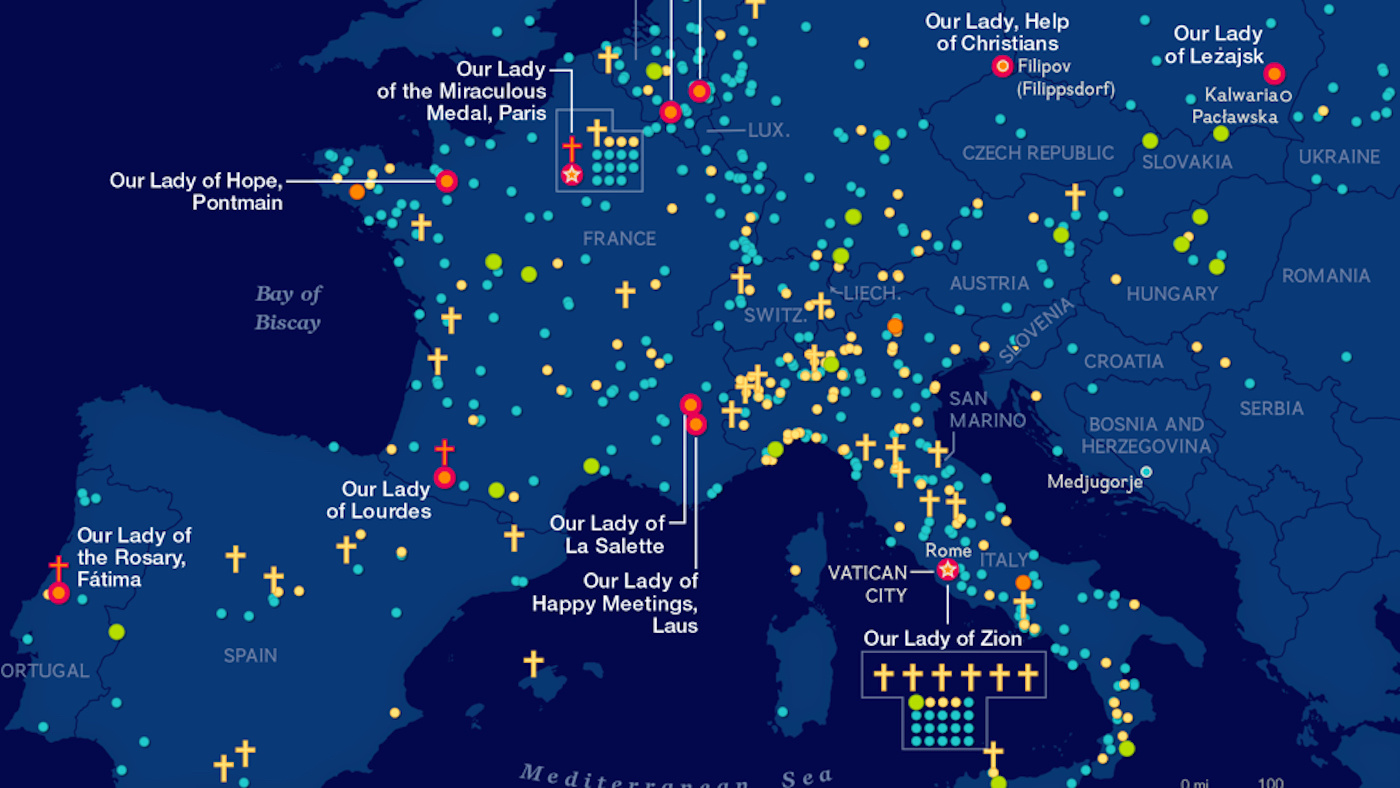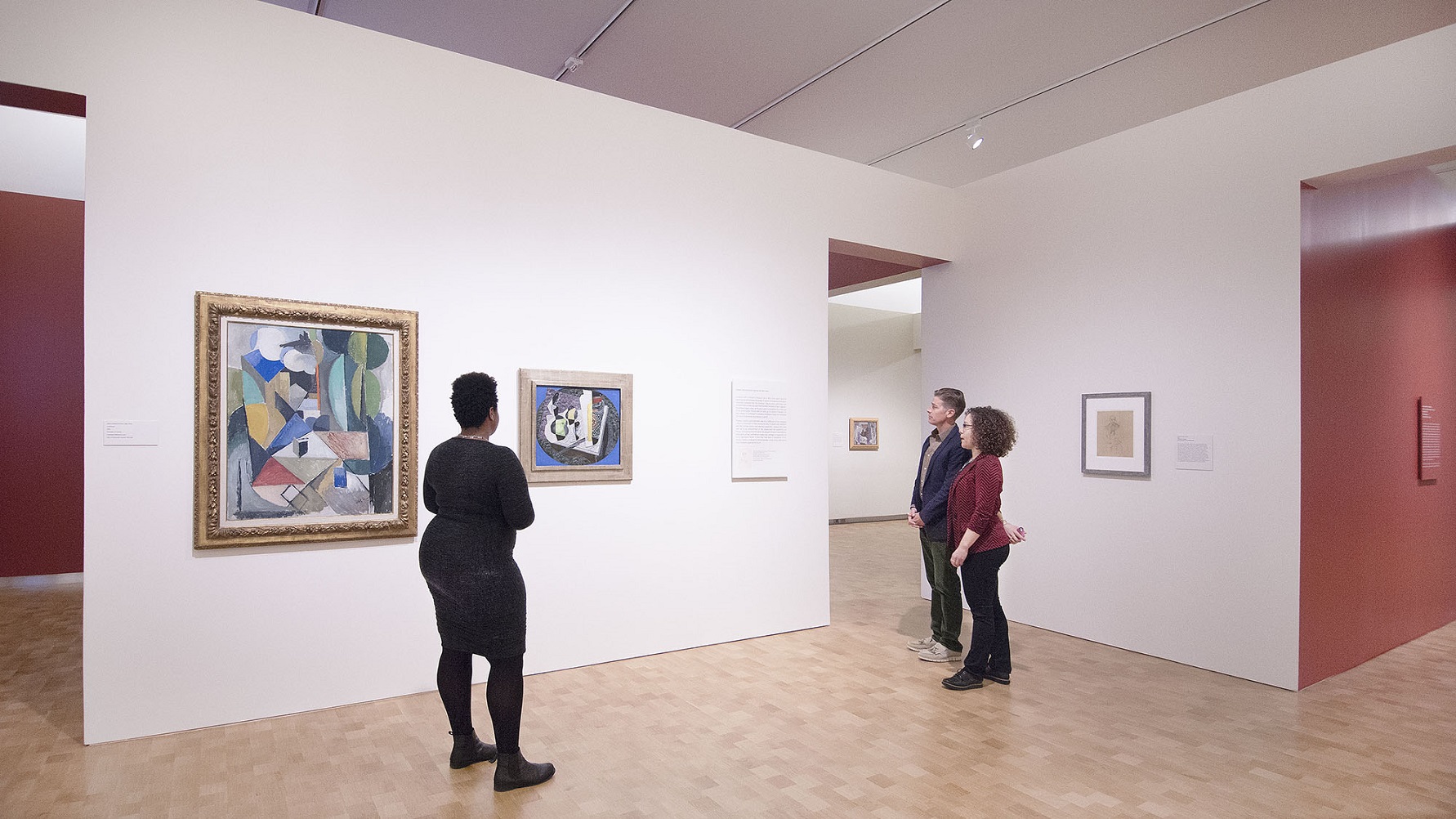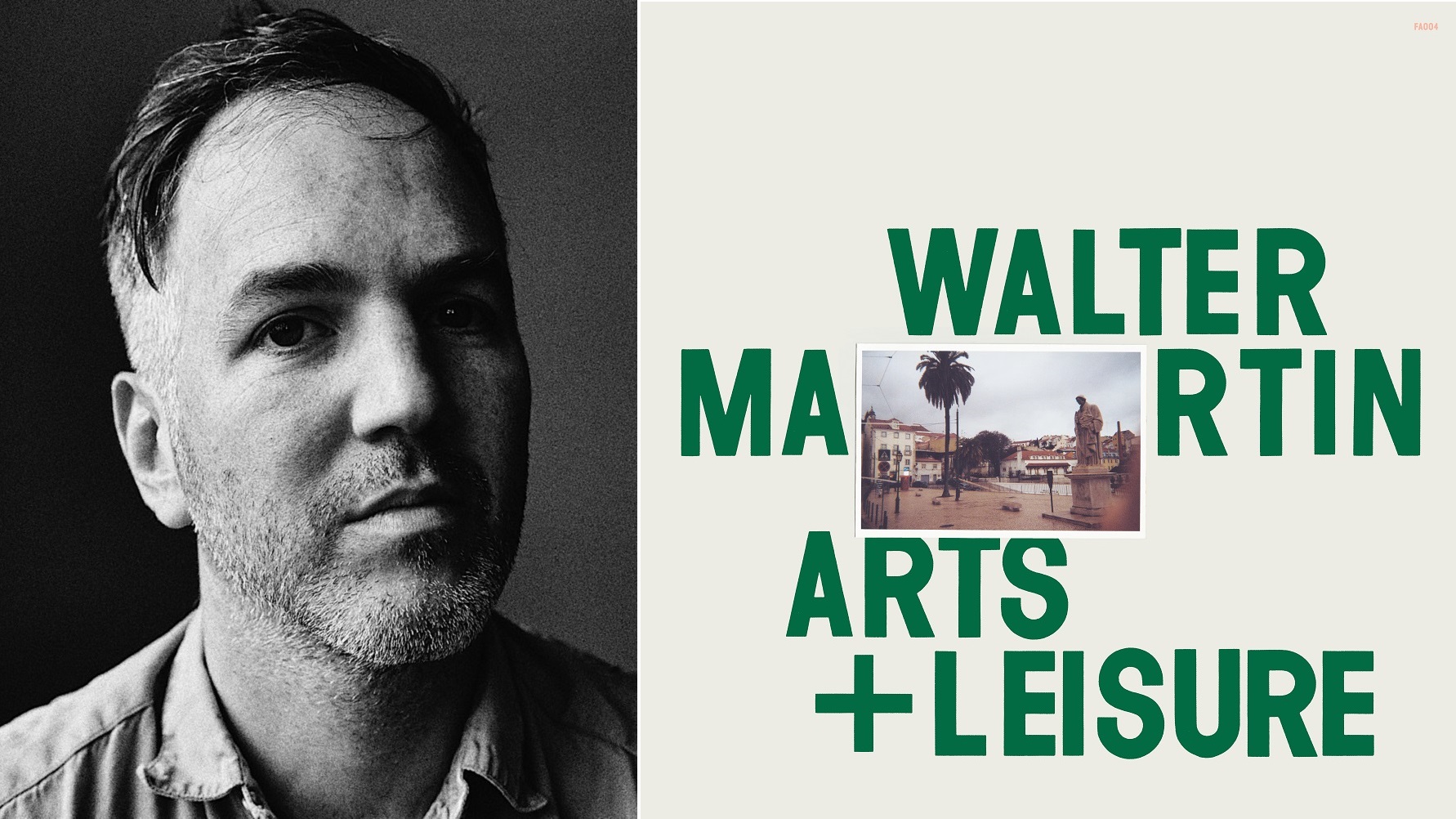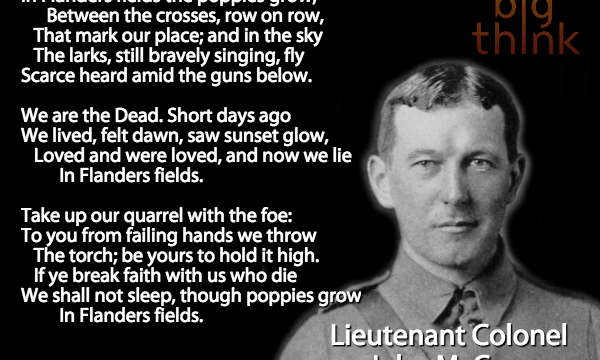The Arts
What is Punk?
Punk isn’t about mohawks or studded leather, says Henry Rollins – it’s about resistance to tyranny in any form.
How Art Can Change Society, with Sarah Lewis
Sarah Lewis, curator and the author of The Rise: Creativity, the Gift of Failure, and the Search for Mastery, on art as a galvanic force.
Sand Mandalas Explained
Venerable Lama Losang Samten walks us through the symbolism and meaning in The Wheel of Life, an ancient Buddhist sand mandala. Samten is a Tibetan-American scholar, sand mandala artist, former Buddhist monk, and Spiritual Director of the Tibetan Buddhist Center of Philadelphia. He is the author of Ancient Teachings in Modern Times: Buddhism in the 21st Century (http://goo.gl/Su66fq).
The Geography of Genius
Genius follows its own law of gravity. It migrates in ever greater numbers to where it thrives. Hence places like Silicon Valley – and attempts to replicate it elsewhere, like London’s Silicon Roundabout. The phenomenon is older than the microchip, of course, as proven by these maps.
Focusing on four creative disciplines, they chart the geography of genius in Europe and, over three consecutive periods (1400-1600, 1600-1800 and 1800-1950), the drastic changes to that geography. For genius, like money, is a highly mobile form of capital, as demonstrated by each of these maps, describing the origin of significant figures in art, literature, music and science.

In the 15th and 16th century, three distinct areas emerged as the centres of creative genius. The art world was dominated by northern Italy (in blue) and especially by its cities (black dots), with secondary centres in the Low Countries and around Madrid. The world of literature was more polycentric, concentrated around major cities like Paris, again Madrid, and some of the northern Italian cities, but the major concentration is around London.
The place to be for music in this period was the southern half of the Low Countries (later to become Belgium). Northern Italy is again the centre of gravity for science in the 15th and 16th century – with two more ‘Silicon Valleys’ in Germany, one near the tripoint with France and Switzerland, the other in the east, around cities like Leipzig and Dresden.

In the second period, the four ‘valleys’ have moved and/or changed shape. The art world seems to have retreated from northern Italy, save for some of the big cities – Venice among them. In the Netherlands, an axis of density now extends from the southern cities of Brussels and Antwerp all the way up north to Amsterdam. England continues to dominate the literary world, its ‘valley’ now extending from London deep into the Midlands. But France – and especially Paris and the Ile de France around it – are moving up into the (literary) world. Other literary concentrations: central Germany, and Geneva, at the western extremity of Switzerland.
The Low Countries have fallen off the musical bandwagon, and the centre of gravity has moved to an area of central Europe in and around Bohemia (currently a.k.a. the Czech Republic). The small area around Venice has extended to encompass much of northern Italy, with two hotspots in the south of the peninsula. In science, Britain has firmly taken the lead, and Italy has completely lost it. Other great scientists dot Germany and France, with particular concentrations in Paris, the same central German area also doing well in literature (and music), and Geneva and some neighbouring cities.

In the last period, ‘art’ has intensified in the Low Countries and northern France, and made the leap across the Channel to London and the south east of England, presenting a contiguous zone dense with artists. Paris and London are the capitals of literature, but a large band of literary figures stretches in one fell swoop across the Low Countries into northern Germany. For the rest, literature seems to be best practised in capital cities – St Petersburg, Moscow, Vienna and Prague also light up.
Music is dominated by three very regional zones in three continental cultures: Paris and the north in France, the central/southern area in the German culture zone (in which we’ll include, for historical reasons, Bohemia), and a similarly contiguous area in northern Italy. But much more than other disciplines, this is the age of science: three black bands across Britain, and large dots surrounding Paris, Berlin and Vienna indicate high concentrations of famous scientists; but the whole of northern Europe is dappled with birth places of famous scientists…
Many thanks to J.B. Post for sending in these images, found here on Dark Roasted Blend. They were taken from Human Accomplishment: The Pursuit of Excellence in the Arts and Sciences, 800 B.C. to 1950 by Charles Murray and are reproduced here with kind permission from the author).
Strange Maps #678
Got a strange map? Let me know at [email protected].
“What is Art, and What is Not?”
Milton Glaser has spent much of his career straddling the fine line between fine art and commercial design; he gives Big Think the insights of an artist who has found the key to distinguishing between the two.
Can Art Teach Patience?
Have you ever noticed how long people look at a painting in a museum or gallery? Surveys have clocked view times anywhere between 10 and 17 seconds. The Louvre estimated that visitors studied the Mona Lisa, the most famous painting in the world, for an astoundingly low average of 15 seconds. Our increasingly online, instantaneous existence accounts for those numbers, obviously. Can we ever again find the patience to look at art as it was meant to be seen? A recent article by Harvard University art history professor Dr. Jennifer Roberts argues not only that art requires patience, but also that it can teach “the power of patience.” Where patience once stood for the helplessness of standing in line at the DMV, patience, in Roberts’ argument, can now stand for empowerment, a “time management” choice that can drive us to look not just at paintings, but at our whole lives.
Roberts’ adapted her article from a lecture given at The Harvard Initiative for Learning and Teaching (HILT) conference last May (available for viewing on YouTube, if you have the patience). The conference presenters were asked to tackle the following question: “In this time of disruption and innovation for universities, what are the essentials of good teaching and learning?” Any educator infuriated by Facebook’s blue glow on the faces of their multitasking students wants to know the answer to that question. (Full disclosure: my day job is teaching college English.) But anyone stressed and somehow unfulfilled by the go-go pace of modern gadgetry wants to know that answer, too. For this age of visual learners, visuals—especially high-content visuals such as art—may be the answer to our modern technological malaise.
Roberts begins by describing her teaching goal of “tak[ing] a more active role in shaping the temporal experiences” of her art history students, in which she, “in a conscientious and explicit way, [engineers] the pace and tempo of the learning experiences.” Using “deceleration, patience, and immersive attention,” Roberts wants “to give them the permission and the structures to slow down,” an experience she feels is “no longer available ‘in nature,’ as it were.” That permission takes the concrete form of making each student spend a full 3 hours in a museum or archive looking at the work they plan to write their paper on. Stripped of all technology and ripped from their natural environment, these students would then theoretically experience the work in a way that cursory, online viewing cannot offer. Despite initial complaints and disbelief that any work could merit 3 hours of viewing, Roberts’ “astonished” students eventually realized the value of prolonged viewing.
“What this exercise shows students is that just because you have looked at something doesn’t mean that you have seen it,” Roberts contends. “[A]ccess is not synonymous with learning. What turns access into learning is time and strategic patience.” Roberts modeled the experiment for her student through her own prolonged viewing of John Singleton Copley’s A Boy with a Flying Squirrel. Roberts then provides a short art history lesson (longer, with visuals, in the video) in which she recounts when she made certain discoveries at 9 minutes, 21 minutes, etc. As fascinating as Roberts’ deconstruction of Copley’s painting is, even more fascinating is her use of the painting’s backstory, which involved months’ long correspondence across the Atlantic as Copley invited criticism from British artists. Because the snail mail’s snail-like pace forced Copley to slow down, Roberts believes, that pacing and slowness worms itself into the art itself, waiting to be rediscovered by the patient viewer.
But what do all these images and ideas mean for learning in regards to patience? Is it just for art historians and art geeks? Roberts quotes fellow art historian David Joselit’s idea that “paintings [are] deep reservoirs of temporal experience—‘time batteries.’” Tapping into the energy of these “time batteries” through Roberts’ “strategic patience,” any student can learn to use patience to unlock the potential learning of “a star, a sonnet, a chromosome.” It’s a bold, cross-disciplinary argument, made with the often beleaguered humanities holding the key, something the “hard” sciences may not be willing to accept.
I’ve been as guilty as anyone else of flashing past a work in a museum or gallery with an eye on the clock. But after reading art historian T.J. Clark‘s The Sight of Death: An Experiment in Art Writing (which I reviewed here) in 2006, I gained a new appreciation for the value of prolonged viewing. In The Sight of Death, Clark “experimented” with how prolonged exposure to Nicholas Poussin’s Landscape With a Calm and Landscape With a Man Killed by a Snake helped him mull the events of September 11th. Clark’s experiment failed in terms of creating a satisfying book, but I think that the experiment itself, as Roberts might agree, was worth it. Personally, whenever I visit my local museum, the Philadelphia Museum of Art, I make a point of spending quality time with my favorites: Cezanne’s Large Bathers, Turner’s The Burning of House of Lords and Commons, or Van Gogh’s Rain. I don’t think I’ve ever spent more than 20 minutes just looking in a single stretch, but the cumulative time must add up to hours. I only wish that I “had world enough, and time” to employ Roberts’ ideas better.
My time crunch quandary speaks to Roberts’ biggest point. “Where patience once indicated a lack of control,” Roberts concludes, “now it is a form of control over the tempo of contemporary life that otherwise controls us. Patience no longer connotes disempowerment—perhaps now patience is power.” If we could all look more closely and completely at our world, just as Vermeer’s The Astronomer (detail shown above) studies his celestial globe, we could appreciate and understand more of the cosmos rushing past us at breakneck speed. It only takes a little pressure to turn off an iPhone, but the pressure to answer to technology’s siren call of speed crushes us as we try to tune out and tune into life itself. Certainly reading Proust’s serpentine sentences or listening to a Mahler symphony slowly unfold can teach the value of patience, but perhaps our screen-obsessed society is only equipped right now to turn to the static painting as salvation from life moving out from under us before we know it.
[Image:Johannes Vermeer. The Astronomer (detail), 1668. Image source.]
John Eliot Gardiner: Celebrating the Universal Bach
Bach was not simply a compliant servant of the clergy of the church but expressed his own views as to how the Christian doctrine appealed to him and also how he thought it applied to his fellow man. And it leaps over all the boundaries of nationality, of date, of period.
How Rodin Turned Early Neurology into Modern Sculpture
When we look at the sculpture of Auguste Rodin, we can’t help but feel what his figures feel. Every inch of those sculpted bodies “speaks” the language of passion, whether it be of joy, love, yearning, or anguish. In a recent study of Rodin’s The Gates of Hell, art historian Natasha Ruiz-Gómez of the University of Essex links the figures found on those monumental doors (such as Rodin’s Damned Woman; shown above) to images from the work of Jean-Martin Charcot, one of the founders of modern neurology and one of the fathers of the malady known as hysteria. When Rodin looked for a way to break away from the tired tropes of classical sculpture, Ruiz-Gómez suggests, he turned to modern medicine, especially Charcot’s work, which linked psychological and physical states in a way that showed Rodin how to make people see what others feel. By linking art and science, this study opens a new door into Rodin’s art as well as why that art still captures our imagination today.
Ruiz-Gómez’s study, titled “A Hysterical Reading of Rodin’s Gates of Hell,” appears in the November 2013 issue of Art History: Journal of the Association of Art Historians. If you expected “ha ha” hysterical from the title, don’t be embarrassed. We’ve lost the original meaning of the word (which some trace all the way back to Hippocrates) that stems from the Greek for “uterus.” That uterine root gives away the group originally linked to the disorder—women. Charcot worked at the Hôpital de la Salpêtrière in the late 19th century when the hospital housed 5,000 women across a complex of more than 40 buildings. Salpêtrière actually began as a prison for prostitutes in the 17th century, only later becoming a hospital in the late 18th century, just before the French Revolution. It continues to operate as a hospital; Princess Diana was declared dead there in 1997.
Charcot and his research made the Hôpital de la Salpêtrière famous at the time. The new science of neurology and its promise to unlock the secrets of the diseased mind captured the public’s imagination. Although not Charcot’s only breakthrough, hysteria became his claim to fame. “Hysteria was seen as a quintessentially modern epidemic,” Ruiz-Gómez writes, “the ‘palpitating question of the day,’ … [because it] seemed to typify the nineteenth century, an age of ‘nervousness and sensitivity.’” Charcot identified hysteria in both men and women, but it became more commonly associated with women as a justification for denying equality to women in terms of education and the vote. Potentially “hysterical” women, the reasoning went, were ill equipped psychologically and physically to bear the strain of the responsibility of an advanced degree or a political voice.
As Ruiz-Gómez reveals through her research, the sculptor knew the doctor well. “Casual invitations to dinners, along with formal invitations to weddings and funerals,” she argues, “indicate an intimacy between the artist and the doctor’s family that lasted at least a quarter-century.” Although Rodin “would have been as aware of the popular sensational fixation on hysteria as any Parisian at the time,” he would also have “had exceptional exposure and access to the medical discourse on the subject because of his strong ties to Charcot’s family and intellectual circle.” Settling the question of access, Ruiz-Gómez addresses Rodin’s motives for using Charcot’s ideas.
Rodin saw himself as the modern Michelangelo, the sculptor who gave the spirit of his age shape. Another rebirth of art would require for Rodin a rebirth of the figure and a shedding of dead approaches. “In order to portray the human condition in modern times–the inherent anxiety of the metropolis, the contagion of the crowd, the collective despair at perceived degeneration–Rodin needed to replace what he saw as the stale tropes of artistic convention, the tired themes of the Salon and the stock poses of its protagonists,” Ruiz-Gómez writes. “[W]hile Rodin scholars have generally assumed that he was only interested in the healthy body, the sculptor was, in fact, also intrigued by the physical manifestations of illness.”
Charcot publicized his neurological findings in richly illustrated books that both professional and popular audiences appreciated. As Ruiz-Gómez proves in a series of side by side comparisons, Rodin drew direct inspiration from Charcot’s illustrations. One of these Charcot-inspired sculptures is Rodin’s Damned Woman (Woman Lying on her Back) (ca.1884; shown above), which appears with the woman’s head dangling off the tympanum of the right door of The Gates of Hell. Ruiz-Gómez believes that Damned Woman “resembles a hysteric in the epileptoid phase of the attack… [when t]he knees are pressed upwards, and the arms are flung to one side of the body.” But more than just a slavish copy, Rodin adds to his woman “a clear expression of dismay, the open mouth suggesting a howl of despair that contrasts with its deep-set, blank eyes,” Ruiz-Gómez adds. In this new neurological reading of The Gates of Hell, Ruiz-Gómez posits The Thinker, the most famous figure and the sculpture set atop the Gates as pensive witness, as “psychically detached” and “a measure by which to judge [the other figures’] remove from reason.” Overall, Ruiz-Gómez’s reading puts the “hell” back into The Gates of Hell by making it a modern, psychological hell we can’t avoid rather than a theological concept we can choose not to believe in.
Ruiz-Gómez also shows how Rodin’s contemporaries recognized the link between his sculpture and Charcot’s neurology. When Charcot’s ideas about hysteria fell into disfavor (in no small part thanks to their anti-feminist usage), critics broke the link between them and Rodin’s art. (Charcot’s a still-respected medical figure nonetheless for his work with amyotrophic lateral sclerosis, which Americans know as “Lou Gehrig‘s Disease” but the French still call “Charcot’s Disease.”) Ruiz-Gómez reunites them to great effect in her study, which demonstrates how science and art coexisted to mutual benefit in the early modern era. When we try to put a finger on what it is that makes Rodin and his figures so unforgettable, it’s useful to see what was going through Rodin’s mind as he worked. Ultimately, Rodin’s figures speak of a compassion and empathy for the mentally ill—those “damned” to a psychological “hell”—that would serve us just as well today in an age of increasing mental illness and decreasing resources for care.





